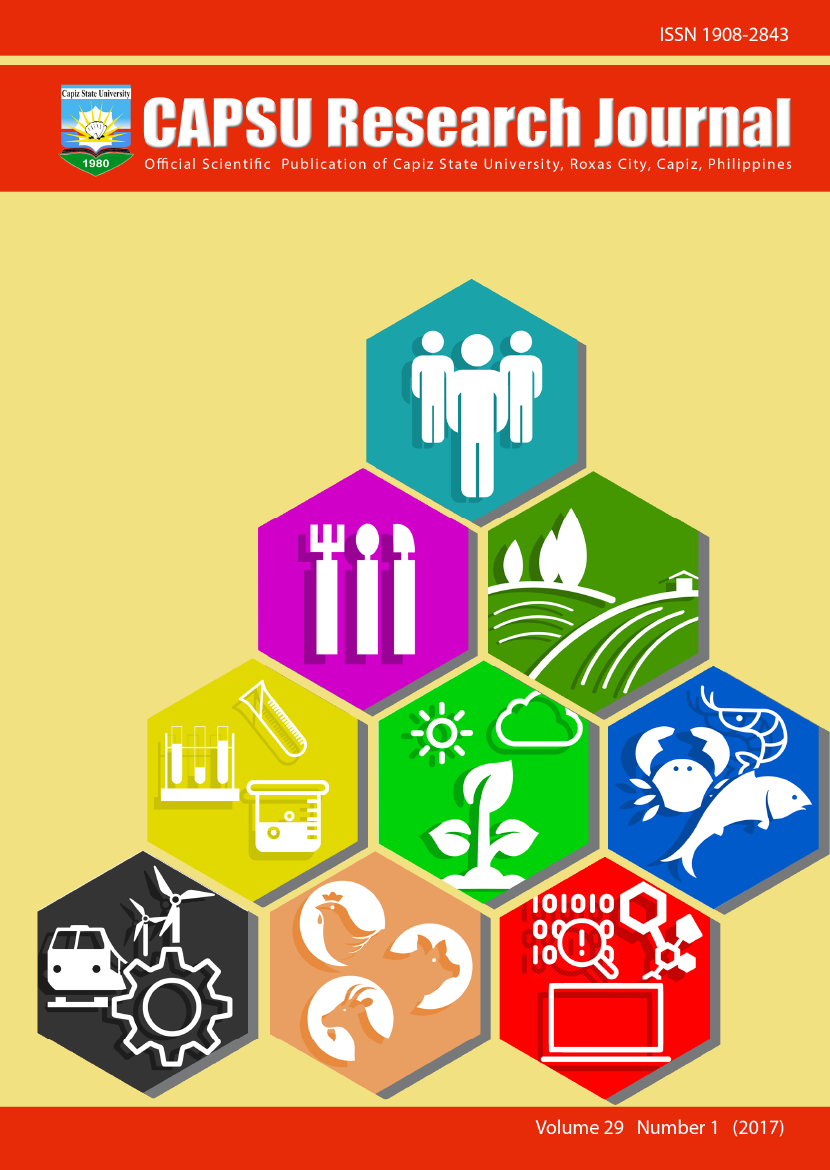Consumer Preference and Proximate Analysis of Guyabano (Annona muricata Linn.) Pie
Keywords:
nutrient content, guyabano pieAbstract
This research aimed to find the ash, moisture, crude oil and total fat content of Guyabano pie and to determine the likeness or dislikeness of respondents towards Guyabano pie among the consumers in all public markets in the second district of Capiz. Experimental and descriptive method of research were used. Testing of the sample was done in three trials. Samples of the generally acceptable product that was developed by Igdanes and Arcangeles (2017) was used. Each sample was then subjected for proximate analysis such as ash content, moisture content, crude protein and total fat, carbohydrate and energy content. For consumer testing, 100 consumer panels was requested to taste the product in Mambusao Public Market, Mambusao,Capiz during market day schedule. Samples for proximate analysis were brought to Department of Science and Technology, Region VI, Chemical and Microbiology Department and results of the consumer test were tabulated and analysed using the means and percentages. Pie with 40% guyabano has 38.0g moisture, 0.63g ash, 2.58 g crude protein, 7.46 g total fat, 51.3g carbohydrate and has an energy of 283 Kcal/100g. Fifty-six percent of the consumers liked the guyabano pie while forty-four percent of the consumers like the pie with 100% flour. Thus, guyabano pie is nutritious and acceptable to consumers.


